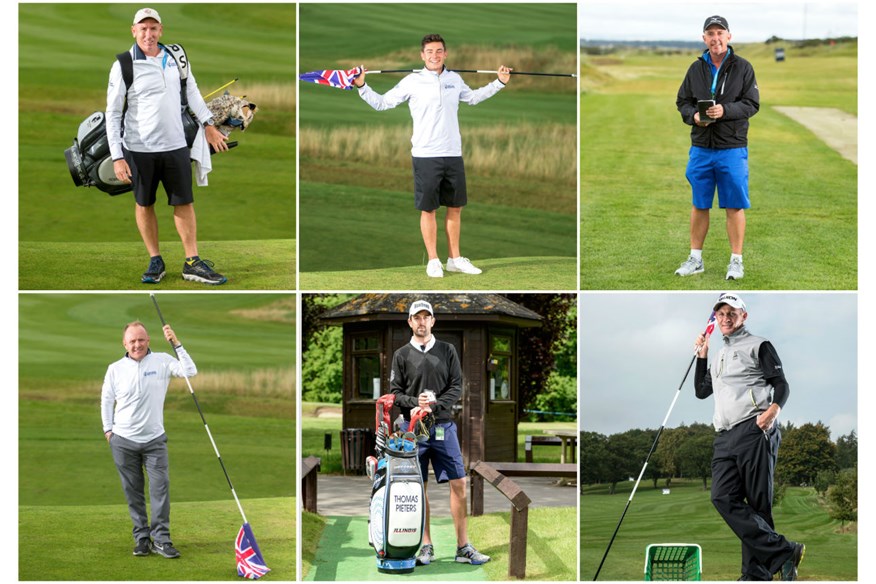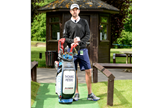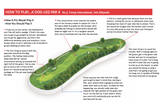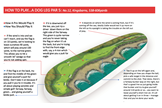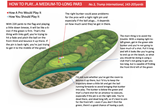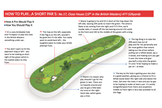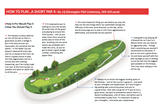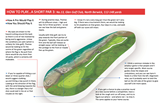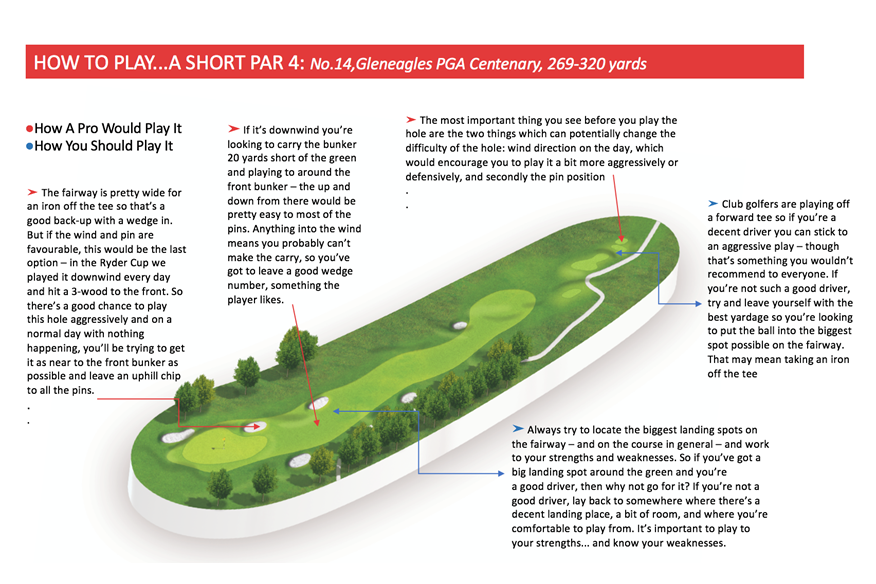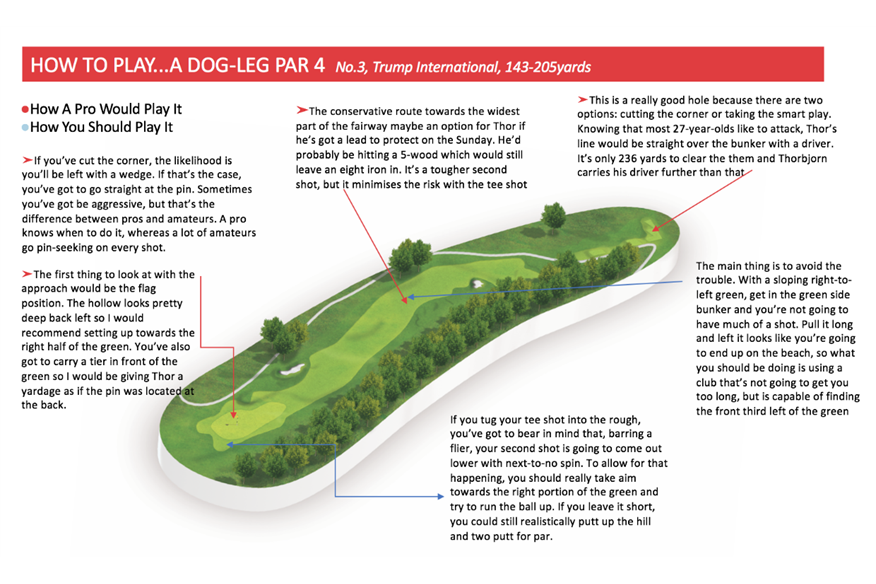Caddie strategy: Plot your way around the course with advice from European Tour caddies
Last updated:
Learn from six European Tour Caddies and find out how to plot your way around the golf course
We speak to Adam Marrow, Dermot Byrne, Dominic Bott, Mick Doran, Phil ‘Wobbly’ Morby, Tom Ayling – who caddie for Thomas Pieters, Shane Lowry, Thorbjorn Olesen, Eddie Pepperell, Chris Wood and Alex Levy respectively – to gain their insight and knowledge on golf.
As well as speaking to the caddies about their careers, each one has given us insight into the different way an amateur should play a hole compared to the way a pro should play it. From short medium/long par-3s to dog-leg par 5s and short par 4s, their knowledge is invaluable.
Adam Marrow
Current Player: Thomas Pieters
Past players: Ross Fisher, Oliver Wilson and Lucas Bjerregaard

In the two years since I started working for Thomas, he’s gone from being rough around the edges to almost being easy to work for. He’s now a much better thinker around the golf course and manages his game a lot better. It’s got to the stage now where I’m there to catch his mistakes. It might only be once or twice a round, or even once a week, where I might step in and tell him his club choice is wrong. But I’m really there to make sure he doesn’t do anything stupid.
The big thing is working out lay-up numbers on par 5s. I think that is really overlooked by amateurs, and it’s actually become quite important on Tour. These guys are so precise that our lay-ups are like playing to a pin. You can’t afford to be one or two yards out. I like to have a Plan A or a Plan B. Sometimes the weather can turn or the wind can switch, so I like to have a “just in case” number and always write the abbreviation in my book.
If we’re playing a new course, I’ll turn up on the Monday with my Bushnell laser and book, and walk the course. I’ll then go through my yardage book with post-it notes and have a checklist of things I need to do when I walk it again or play the pro-am. Come Wednesday night, everything will be done and ready to go. I always prefer to be over prepared, rather than underprepared.
Augusta is the hardest place to caddie because the margins are so small. The width of an office table can be the difference between being two feet away from the hole or off the green. We played the 14th hole this year and we were hitting a wedge in. One day, it cleared a ridge by 10 inches and ended up within tap-in distance. The next day, the ball pitched six inches short of that ridge and rolled back off the green. The difference was 16 inches, yet the outcomes were so extreme. You walk off Augusta and you feel broken.
When Thomas needs to hit a wedge, I tend to back off because everything comes down to feel. If he needs me to tell him what to do from inside 100 yards, we’ve got problems.
Working for Thomas Pieters now as opposed to working with Thomas Pieters two years ago is very different. He’s a lot more aware and has matured and improved as a golfer. He doesn’t need as much reassurance. He’s won three times and has done well in the Majors, WGCs and The Ryder Cup. He represented his country in the Olympics. He’s got no reason not to be confident.
Thomas isn’t playing for second or third. He’s there to win. If he’s got a chance to bomb a drive and hole a pitch shot from 80 or 90 metres to win, then I’d back him to do that. Even coming up the final few holes of the Masters, he wasn’t settling. He finished fourth, but had he holed some more putts on the back nine, he’d have been close to challenging Sergio and Rosey.
Professional golfers are essentially failing 99 per cent of the time because they always have more losses than wins. As a caddie, manager or coach, you are always trying to pick them up. They can finish second three times and not be happy. Thomas is slightly frustrated this season that he hasn’t won, but I keep telling him that he’s putted well and put himself in contention. It’s just been one of those years. Even when I play golf, I try and draw on positives and think of good shots I’ve hit. The key is being able to stay positive when you’ve had a bad run of results or holes.
This is my 13th year of caddieing on Tour, but I do think it’s an uncertain time for caddies. Having a friend on the bag is starting to take precedent over someone who has years of experience as a caddie. The yardage books are a lot more user friendly so I think you might see a rise in the number of players having friends on their bag. If you’ve got the opportunity to have a caddie and can afford it, invest in one because you’ll probably enjoy the course a lot more. It will enhance the experience.
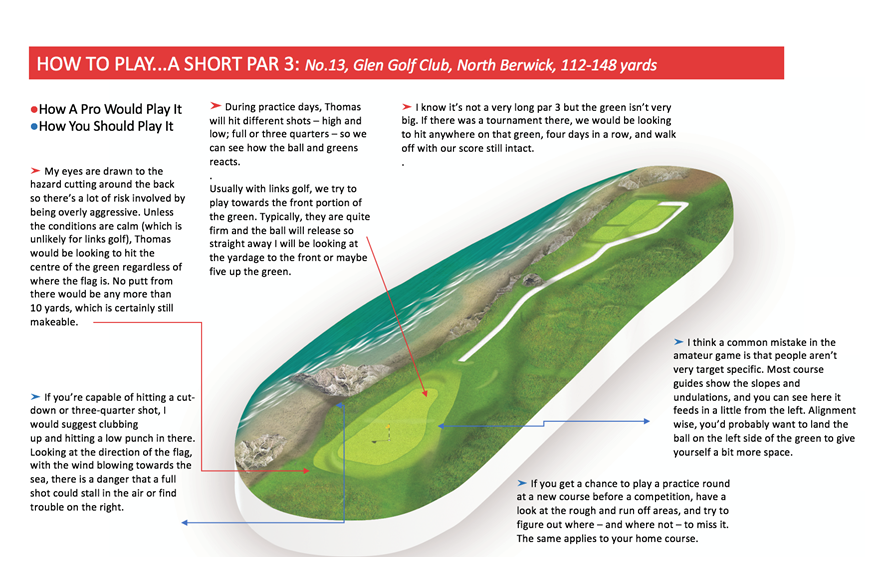
Dermot Byrne
Current player: Shane Lowry
Past players: Peter Lawrie, Stephen Gallacher
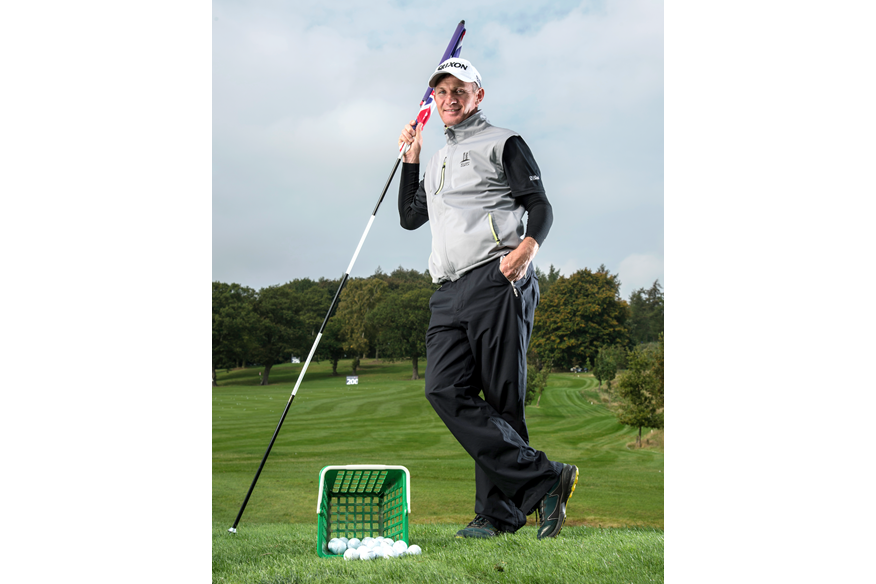
My early memories include caddieing for Stephen Gallacher at Slaley Hall in 2001 when he came second to Andrew Coltart, but this is my ninth year with Shane and I’ve been lucky… he’s done very well and he’s played at the highest level for a long time now.
The high spot was winning the World Golf Championship at Akron. Winning a title of that magnitude is massive. It’s pretty unusual to caddie for one player for so long, so I must be doing something right. I think I’m just an easy-going person who takes everything in his stride and I think you have to be – you’re meeting these guys at the highest point of their lives and careers as well as the lowest part of course.
For a golfer, where else would you rather be? We’re very lucky to find ourselves in such a privileged position – we’re all keen golfers after all and have tried to play, but unfortunately weren’t good enough to make a living from it. But we’re doing the next best thing for sure. I’m not playing much these days even though I live at Killeen Castle Golf Club – that hasn’t transformed my game into anything better than mediocre. I don’t get any tips from Shane either – he plays a different game to me.
Caddies these days are more professional and there’s more responsibility which comes with playing huge tournaments virtually every week with so much money involved. And where there’s money there’s professionalism and it’s all about the fellow who wants the money the most.
Favourite tournaments and venues? If I wanted to watch a golf tournament I’d go to the Masters, but to go and have fun I’d go to the Phoenix Open in Arizona – it’s an amazing experience. The par-3 16th at TPC Scottsdale is incredible and I was lucky enough to be involved in the final group there two years ago. I haven’t taken part in the caddies’ race on it though I think I’d stand a good chance – you would have to be a fast caddie to beat me!
Dominic Bott
Current player: Thorbjorn Olesen (Denmark)
Past players: Howard Clark, Garry Evans, Thomas Bjorn, Paul Casey, Graeme Storm, Paul Eales

I started caddieing back in ’93 when Paul Eales offered me a job. Originally, I thought I’d only do a year but here I am, still going, in 2017. I’ve nearly packed it in twice, but I’ve also had some great times and celebrated nine wins with various players. My first victory came in ’94 with Paul. It was at the Extremadura Open. It was only held that year; we haven’t had it again since. I remember getting a cheque for £4,000 and felt like a millionaire.
In 1994, my stomach was going because I had never been in that environment before. But over the years, that nervousness has changed to excitement. There’s a real buzz now whenever we’re in contention on a Sunday. My best win was with Thorbjorn at St Andrews. To walk up that 18th on a Sunday with a three-shot lead in the last match was so special. Let’s just say the goose pimples starting appearing.
I know Steve Williams got some stick for saying he’d won 13 Majors, but as a caddie you are part of a team; part of the unit. If you’re not getting on, these victories won’t happen.
I see Thorbjorn more than my wife. We get on well; we laugh and I enjoy his company, but he’s the boss. He pays the wages and writes the cheques. He might rely on me in some ways but at the end of the day, he hits the golf ball. Thorbjorn doesn’t like to talk about golf during tournaments. He likes to talk about what’s in the news, girlfriends or sports. Very rarely will golf be a topic of conversation.
Sometimes if a pro starts behaving like a child, they need to be told. I’m not afraid to do that. But you’ve got to remember that you are the closest person to them on the golf course. And if things start going wrong, you will get it in the neck believe me.
Golfers are a different breed of human beings. They have mood swings. I’ve had some great bosses. I worked for Thomas Bjorn four times and Paul Casey. But they are two very difficult guys to work for. Thomas and I had so many arguments that they were calling us Richard Burton and Elizabeth Taylor! In 2013, we won in Qatar on the Sunday and then on the 6th hole in Dubai on the Thursday I was sacked. I then got reinstated on the 7th tee!
The downside to caddieing is the travelling. It’s not as glamorous as everyone thinks. We see a lot of hotels and airports, and you’ve got to have a very thoughtful wife or partner.
When we go to a new golf course, I’ll typically walk the course on the Monday and try to plot how Thorbjorn would ideally like to play it. I like to get a couple of strategies for each hole, weather and wind depending.
Thorbjorn might go to a course and play just three holes on the Tuesday to get a feel for it. Normally though, we will go out and play nine and then work out a strategy for the week. Sometimes we might have a different plan for Sunday afternoon if we’re in the pack or chasing someone down.
There’s nothing wrong with aiming for the centre of the green on every hole. That was our mindset playing in the Open Championship this year. If you hit the middle of the green at Birkdale, you had 18 decent chances to make birdie. The best advice I can give a mid-handicapper is to keep the ball in play as much as you possibly can. If you can give yourself the chance to two putt for par on every hole, you’ll keep the big numbers off your scorecard.
So many guys in pro-am competitions hit their driver 200 yards. But when they reach a par 3 which is the same distance, they are almost frightened to hit a wood. It’s an ego thing, but only smart golf will ever get your handicap to come down.
Mick Doran
Current player: Eddie Pepperell (England)
Past players: Costantino Rocca, Lee Westwood, Justin Rose (twice), David Howell, Camillo Villegas, Brendan Steele and Cameron Tringale.
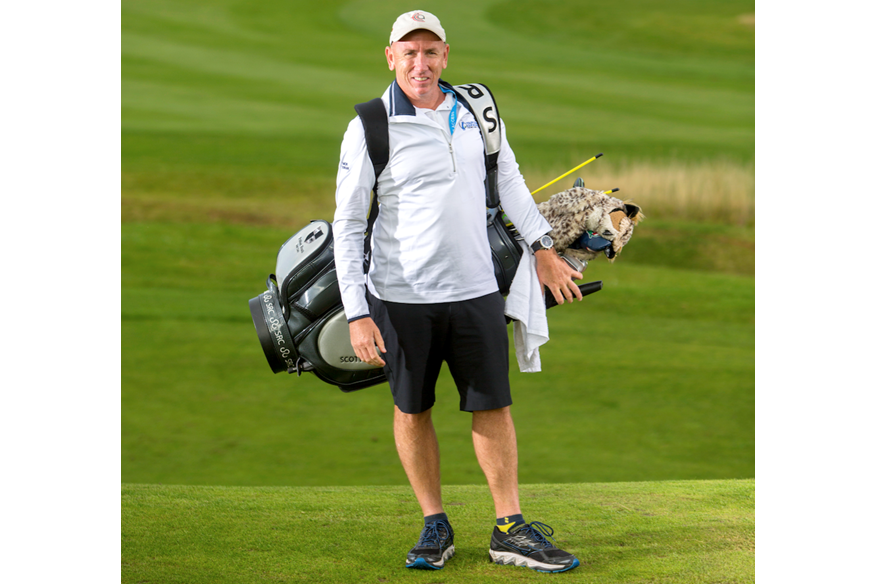
This is my 30th year caddieing. You can tell by looking at my weathered face I’ve been out here for a good while! I started when I was 12 at Wentworth and a group of us went on Tour… four of us are still caddieing today. I’ve been fortunate because I’ve worked for a lot of fantastic golfers on both sides of the Atlantic and won 34 tournaments with different golfers and caddied in six Ryder Cups.
Winning at Wentworth with Costantino Rocca and David Howell has been the highlight so far because, for me, that’s where it all started as a young kid. Watching Rocca hole out from the Valley of Sin to get into a play-off with John Daly in the 1995 Open at St Andrews was special, too.
Of course we’re living off their (the players) talent, but you can make a big difference especially over the last nine holes, whether it’s to make the cut or winning the tournament. It’s all about getting them over that line. Sometimes when the heat is on, golfers aren’t thinking right and you’re there to provide a guiding hand. Sometimes saying little is good, just not getting in their way and bombarding their mind with so much information. It’s quite simple at the end of the day, it’s just common sense.
It’s a fantastic job, albeit when we started out it was all about travelling throughout Europe. Every time I see Tiger Woods I thank him because he made the game what it is today. Sure, there’s a lot of travelling but you’re playing for fantastic purses.
To be honest, I can’t think of too many disasters though losing Ryder Cups is a nightmare – you don’t want to lose those. Ryder Cup victory celebrations are fantastic. After one victory, Billy Foster and myself emptied the locker room on Sunday and gave all the equipment and clothes to Europe’s fans and afterwards I remember the players asking where everything was!
It’s very hard to come straight out onto the main Tour and caddie – if the golfer doesn’t know you, he’s not going to employ you. That’s the bottom line. Some come out and try but struggle week in, week out. I would say go to the Challenge Tour and start from there. Be out with experienced caddies and listen to what they say. That’s what I did when I was young and I’m very confident on the course, I talk loudly – that strikes a chord with most golfers. I like to think I’m a pretty strong caddie.
I always say ‘don’t be scared of using the tee box.’ If you’re on a par 3, the green is quite firm, the flag is at the back and you’re going in with a 4-iron that is coming in flat, remember you’re allowed to go back two club lengths on the tee. In professional golf two yards is massive. That’s worked well over the years, especially in America where the greens are really firm. Left or right, depending on where the wind is, just use the tee box…
I play off a 12 handicap and like hitting balls on the range but only play about six times a year owing to the travelling involved in this game. In my weeks off I just want to chill out.
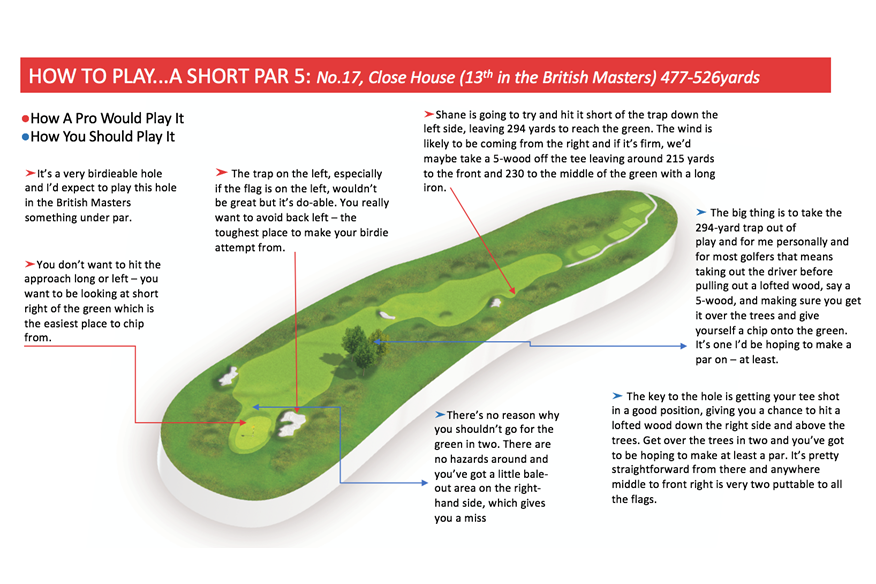
Phil ‘Wobbly’ Morby
Current Player: Chris Wood
Past Players: Ian Baker-Finch, Howard Clark, Ian Woosnam, Jose Maria Olazabal (two stints), Justin Rose.
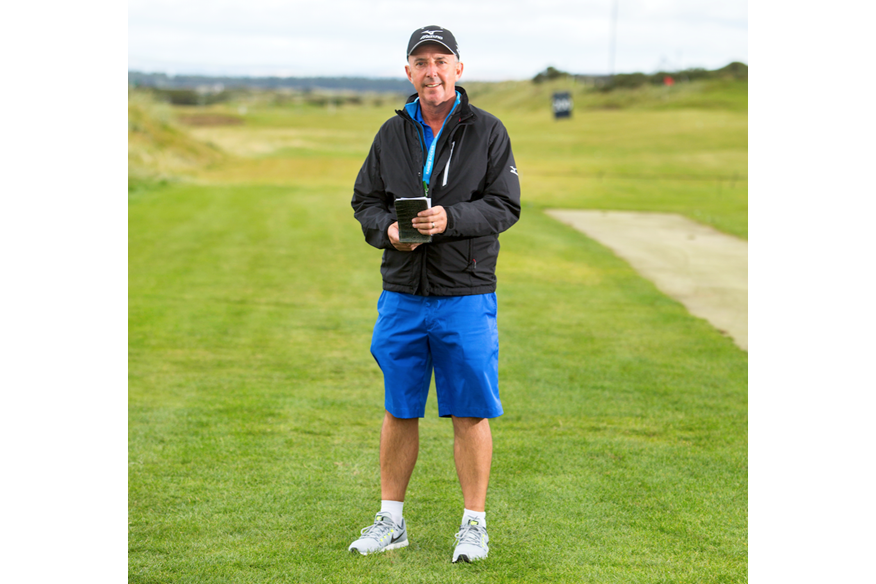
I’ve been on Tour 36 years and it’s been quite a memorable 36 years. I started at 16 just after I’d left school and at my local club, Selby. David Jagger was the pro there, and he said ‘do you fancy caddieing for me in the summer?’ So I did and it became a sort of apprenticeship as I carried on the next year. There weren’t so many caddies around and I got a few breaks, worked up the ladder and my first big bag was Ian Baker-Finch in 1984 – I started just before St Andrews when he was leading The Open there. That’s when you tend to get your face known and I kicked on from there.
I had a season and a half with him, then teamed-up with Howard Clark and obviously my main man after that was Woosie. That was the catalyst of my career. I did over 14 years with Woosie and won 27 tournaments with him, including the 1991 Masters, which was fantastic. We played with Tom Watson on the last two days and that was special.
I had a spell where I had jobs with three players in 21 years including Woosie, three with Jose Maria Olazabal, a year with Justin Rose and then another three with Olly. I don’t like to chop and change players, though I’ve had a few over the past few years, recently starting with Chris Wood. Hopefully I’ll stay on his bag for a few years.
I won three tournaments with Olly and was in contention for the Masters a couple of times but won the Buick at Torrey Pines with him despite only making the cut on the number which was unbelievable. Overall, I’ve had 41 wins with nine different golfers and I’m trying to get to 10 because I think that would be a record – Pete Coleman and Andy Prodger have had 10 which takes some doing, so I’d like to do that before I retire.
At the end of the day, it’s the players who are still hitting the shots. You can only advise them. You’re trying to save them shots and if you can save them a shot a round, even a shot in a week now, that could be the difference between winning and losing.
There’s a great camaraderie among the caddies. I’ve travelled with Billy Foster (Lee Westwood) and Ken Comboy (Graeme McDowell) for the past 20 years and we always have a good laugh. There’s lots of banter – everyone finds out if you make a mistake and lets you know about it!
We’re looked after a lot better now with better food and have somewhere to go and sit when it’s raining, but the main thing that’s changed and is a little bit disappointing, is the technology with the yardage and greens books. Look at it – there are five players in the world’s top 10 who have friends on their bags. And that’s because of how easy it is. You can just look at a book and go, whereas before there were just pictures in books and you had to go out and pick your own lines. So it’s easier to become a caddie now because you can rely on your greens books; buy one of those and if a player comes in you just look at the book.
There’s definitely an art to green reading – some players and caddies are better than others – so the sooner I think they get away from this, I think it will make it more competitive again.
A successful caddie? One who makes the fewest mistakes. Obviously when you get in the rough you’ve got to try and call the lie and, when it’s windy, suss out how far the ball is going to go. Also, you’ve got to know when to step in and say something. The more you know a player, the more you get to know his mannerisms etc.
There have been many highlights including winning the Masters with Woosie, and eight Ryder Cup appearances – most of them successful. Me and Woosie were like brothers. We travelled everywhere together and I used to stay with him. We’d go and have a pint after we’d finished. It’s been a colourful career and I can be a little bit outspoken. But overall I’ve had more decent relationships than poor relationships. In reality, you’re spending more time with your player than you your wife, so you have to get on otherwise you’ve got no chance.
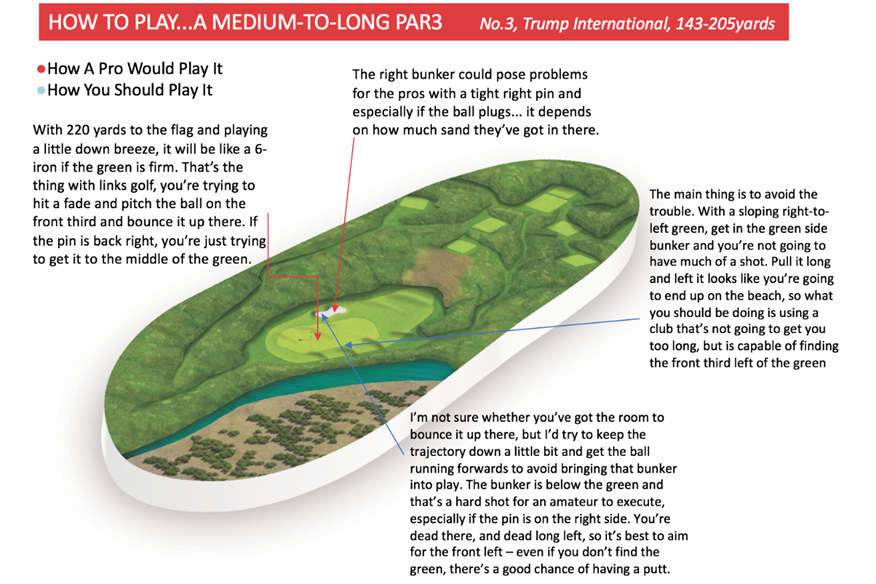
Tom Ayling
Current player: Alexander Levy (France)
Past players: Benjamin Hebert, Christian Cevaer, Jose-Filipe Lima, Victor Dubuisson.

At 27 I suppose I’m not far off being the youngest caddie on Tour, though this is my seventh season out here. I was doing my golf PGA degree and a friend of mine playing on the Challenge Tour, Benjamin Hebert, asked me if I wanted to give it a try for a few weeks. That was it, seven years later I’m still here!
I was with Victor Dubuisson for about 17 months including the 2014 Ryder Cup at Gleneagles when he was a rookie, but stood up to the plate. I’ve been with Alexander Levy for just over two years now and he’s a brilliant player, a mad Frenchman but good fun on the course.
A player looks for different things in a caddie, but I think more than anything there needs to be a good relationship because you’re spending so much time together. You’ve got to have a good time and a bit of fun out there to take away some of the pressures. If you can’t do that with the person you’re with, I find the job becomes a bit more difficult. You learn to know what’s good and what’s not good for your player and how to make the team work, that’s really important.
The Ryder Cup at Gleneagles was my best golfing week ever. It doesn’t get much better than that for a caddie or player – one of the highlights of any golfing career.
The fun part about caddieing is coming down the stretch when you’re in contention with the crowds around and you feel the players are under pressure. It’s just an enjoyable moment. Sure, you can earn good money, but it depends on the player you’re working with. If you’re with somebody who is doing well, you’ll be doing well too and you do your best to help your player as much as you can.
It’s great to travel all over the world and discover different cities and cultures – it’s a luxury and we are lucky to do that. But when you’re doing it 25-30 times a year sometimes you think I can do without travelling as much.
Caddieing has become more structured now. Back in the day you used to struggle just to get a hotel or get to the event with not a lot of money in your pocket. It’s changed so much over the years and everything is made easier for us week in, week out. It’s evolved with the times. We’re treated really well, have better facilities and overall the relationships with players is really good, too.
The best caddie? Probably the guy who has the best player! It’s tough to call, but there are a lot of very good caddies who haven’t had the opportunities to get the best jobs and therefore not shine as well. There are so many who do a good job but don’t get as recognised as other caddies do.
It’s the next best thing to playing. Just being in the mix and feeling the pressure of everything going on in a tournament is good fun and, at the end of the day, I enjoy it because it’s the nearest thing to playing golf professionally. The first job is always tough because you’ve got your point of view and sometimes it can be tough to speak your mind. But when you’ve thought something over and there’s something you can contribute that is important, you should say it as it is. That’s the most important thing. The worst thing is to have regrets just because you didn’t speak up – the intelligent part is to find a way of delivering that message without causing any harm or sending any negative vibes to the player. Just be as straightforward and honest as possible.
